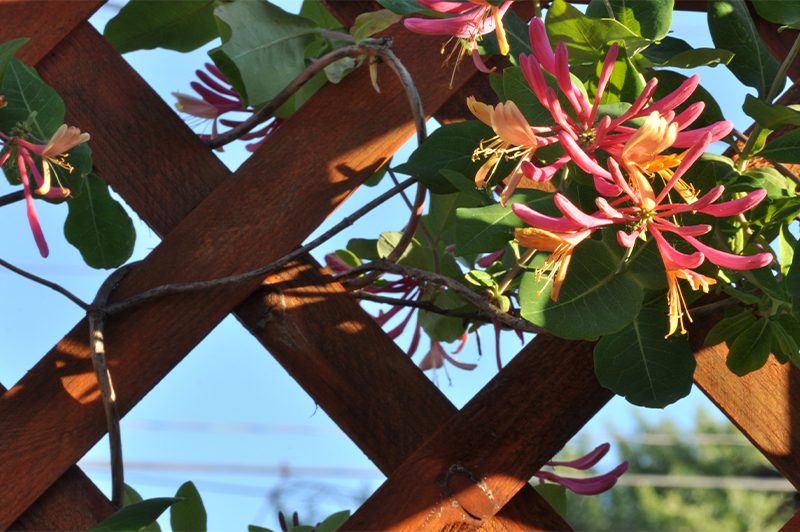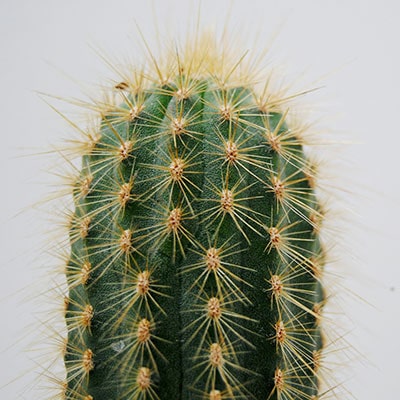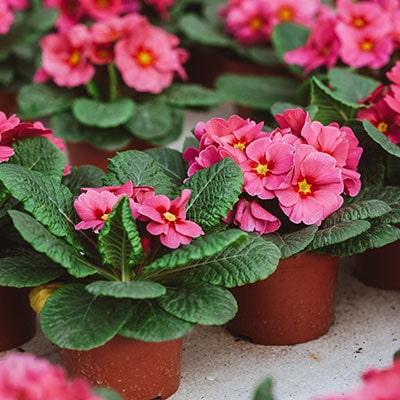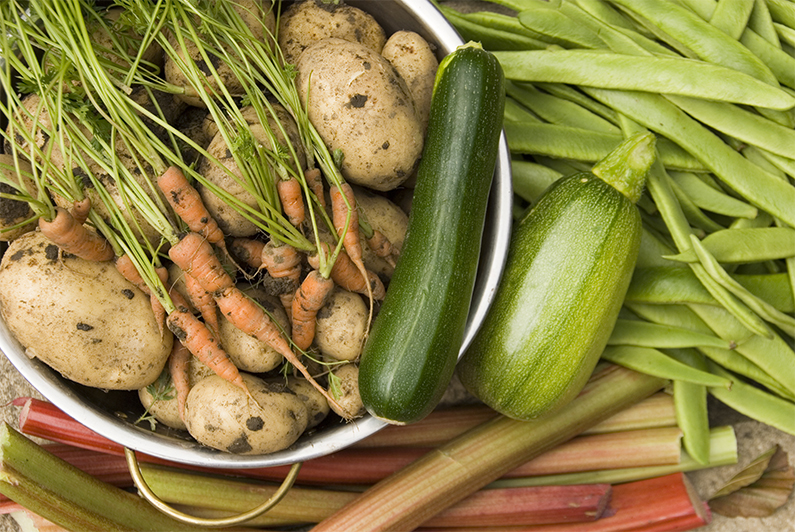![Growing Eco-Friendly Plants: A Guide for a Better Environment [UPDATED]](https://www.shedstore.co.uk/media/magefan_blog/eco-friendly-plants.jpg)
At Shedstore, our products are designed for the great outdoors. We love our gardens and, naturally, the environment. So, here we explore the fascinating world of eco-friendly plants and their essential role in promoting a healthier and more sustainable planet. Discover the benefits of air purifying plants, carbon-absorbing plants and trees, and wildlife-attracting flowers. Learn how you can contribute to a greener environment by cultivating nature's wonders in your garden or as indoor plants in your living areas.


Editor’s Note [18.08.23]: our guide to growing eco-friendly plants was first published on April 24, 2015. Here we provide a definition for eco-friendly plants as well new content about carbon consuming plants, air purifying plants, the value of planting trees, hypoallergenic plants, choosing plants for biodiversity and drought-resistant plants. We hope you enjoy this new version of the article.
What are eco-friendly plants – a definition?
Eco-friendly plants are those that are cultivated and grown in a manner that minimises harm to the environment and promotes sustainability. These plants are typically native to their region, requiring less water, chemicals, and maintenance. These plants for biodiversity, provide food and habitat for wildlife and contribute positively to the overall health of ecosystems. Environmentally friendly plants are essential in gardening and landscaping practices that prioritise conservation and environmental well-being.
Carbon absorbing plants and photosynthesis
The process by which the plants purify air is a natural one – “photosynthesis”. Plants release oxygen into the air as they take in carbon dioxide from the air, as well as filter out and absorb harmful toxins. Furthermore, green material provides nourishment for the entire food chain and not just the atmosphere. Both indoor and outdoor environments can be improved by simply growing these eco-friendly plants. There are some big environmental problems that must be solved, and this is one small way that everyone can contribute to reducing these problems that is safe and effective.
The wonderful thing about the relationship between people and plants is that people need oxygen and an environment that is richly oxygenated to survive, while plants need carbon dioxide to thrive.
Carbon consuming plants to choose
If you are looking to plant carbon absorbing plants in your garden or home you can choose from any of these plants to grow - aloe vera, areca palm, bamboo, bamboo palm, Boston fern, cacti, Chinese evergreen, Chinese money plant devil's ivy, dracaena, English ivy, ficus tree, lady palm, Money plant, peace lily, philodendron, pothos, rubber plant, snake plant, spider plant, Swiss cheese plant, umbrella tree, weeping fig, and ZZ plant. Choose any of these carbon absorbing plants as effective indoor air purifiers.


Natural air filters – the best air purifying plants for your home
By incorporating air purifying plants into your living spaces, you will transform your home into a healthier and more harmonious environment, benefitting both you and the planet.
Addressing indoor air quality concerns
Indoor air quality is a significant concern, especially in modern homes with limited ventilation. Harmful pollutants and toxic chemicals accumulate indoors, leading to health issues and discomfort. However, nature provides a simple and effective solution to this problem in air purifying plants. These green wonders not only beautify your living spaces but also act as natural air filters, helping to remove harmful pollutants and improve the air you breathe.
Benefits to expect
The best air purifying plants offer numerous benefits beyond their decorative appeal. They actively remove harmful compounds such as carbon monoxide, formaldehyde, benzene, and trichloroethylene from the air, making your indoor environment healthier and safer. These plants also reduce airborne dust and mould spores, creating a cleaner atmosphere that promotes overall well-being. Additionally, air purifying plants have been shown to enhance mental clarity, boost productivity, and reduce stress levels, contributing to a more pleasant and inviting living space.
Plants to grow
When choosing the best air purifying plants as indoor plants, there is a wide variety to select from including tropical plants. Some popular options include spider plant, peace lily, snake plant, and aloe vera. Each of these plants boasts unique air-cleaning properties and will thrive indoors with minimal care in areas away from direct sunlight.
Fossil fuels and global warming
Amassive numbers of trees have been felled, meaning there are fewer and fewer flora to try to absorb the extra carbon dioxide. The extra emissions into the atmosphere that are not diminished by natural means cause heat to be trapped, resulting in changes in the climate that include unnatural temperature shifts and severe weather patterns.
How companies and individuals are helping
Fortunately, dozens of nations, corporations, and organisations, have been taking steps to try to use plants to help reduce this pollution. They do this through large-scale reforestation projects and the creation of diverse ecosystems. However, as individuals, people can contribute to this overall endeavour by simply planting flowers, vegetables, herbs, and even trees in their communities and in their personal landscapes. Every effort helps to try to create a more natural balance and an atmosphere that is much cleaner.
Helping the environment with eco-friendly plants
Plant a tree - the giant of all plants
Planting a tree is a game-changer for the environment, as trees are undeniably the giants of the plant world, capable of performing significant air purification. When you introduce a tree to your garden, you are not only enhancing its aesthetics but also contributing to a healthier ecosystem.
Opt for low-maintenance tree varieties that are well-suited to your climate and local conditions to ensure their successful growth and long-term benefits. These trees act as natural air filters, absorbing harmful toxins, pollutants, and carbon dioxide from the atmosphere while releasing oxygen, thereby playing a crucial role in mitigating climate change, and improving air quality. By choosing the right tree species and providing proper care, you can make a lasting impact on the environment and leave a green legacy for future generations.
Garden trees offer not only aesthetic appeal but also significant environmental benefits, making them valuable additions to any landscape in the UK:
- For smaller gardens - there is a wide range of tree species that are well-suited to limited spaces, providing beauty and ecological advantages. Consider planting species like crab apple, hawthorn, rowan, or silver birch for their compact size and vibrant presence
- For larger gardens - incorporate majestic trees that make a strong impact on the environment. Consider planting English oak, Scots pine, beech, or sweet chestnut for their impressive height, shade provision, and considerable ecological contributions
Plant bee-friendly plants
Bees are essential to our ecosystem. According to Friends of the Earth:
"The vast majority of plants we need for food rely on pollination, especially by bees: from almonds and vanilla and apples to squashes."The cotton our clothes are made from has to be pollinated; the plants our livestock eat need to be pollinated; and nearly all our wildflowers need to be pollinated. Bee-friendly plants to grow include the following: allium, cotoneaster, foxglove, geraniums, hollyhock, lambs’ ears, lavender, lupin, oregano, and wisteria. There are plenty of bee-friendly wildflower seed mixes you can use too. Be very careful about your use of pesticides too. Always avoid using it on flowering plants.
Hypoallergenic plants
Hypoallergenic plants are plants that are less likely to trigger allergic reactions in individuals with pollen allergies or sensitivities. These plants typically have low pollen production or produce pollen that is heavy and less likely to become airborne.
For people who may have allergic reactions to certain plants, hypoallergenic plants rate very low on the Ogren Plant Allergy Scale (OPALS). First published in allergy-free gardening magazine in 2000, this is a rating scale designed by Thomas Ogren that measures the allergy potential of all garden and landscape plants.
Common hypoallergenic plants to grow include certain types of ferns, palms, succulents, and flowering plants with large, showy flowers that do not release much pollen into the air. Choosing hypoallergenic plants for landscaping and indoor gardening is beneficial for people with allergies, as it allows them to enjoy the beauty of plants without experiencing bothersome allergic symptoms.


Choosing plants for biodiversity
Plants for biodiversity play a vital role in supporting and preserving the delicate ecological balance in our environment. By choosing a diverse range of native plants to grow, you can attract a multitude of wildlife, from butterflies and bees to birds and beneficial insects, creating a thriving ecosystem in your garden. Embrace a mix of flowering plants, shrubs, and trees to provide food and shelter for a wide variety of species. These plants not only enhance the beauty of your garden but also contribute to the larger conservation efforts, promoting a healthier and more sustainable environment for future generations.
Why choose drought-resistant plants?
Choosing drought-resistant plants (also known as xerophytes) for your garden is a great way to conserve water and promote a sustainable environment. These plants are nature's resilient survivors and have adapted to thrive in arid conditions and require minimal water.
By growing drought-resistant plants, you contribute to water conservation efforts. Look for plants to grow like succulents, yucca, lavender, sedums, and agave, which store water in their deep root systems, leaves and stems and survive long periods without rainfall. Incorporating these water-wise plants into your garden not only helps the environment by reducing water usage but also adds beauty and diversity to your landscape.
Time to get started...
Gardening and growing eco-friendly plants are something that really should be thought of as an activity that benefits everyone. Start by adding a houseplant or two, then look at your garden and see where you can add a few more plants. If you get the gardening bug, you can move on to growing your own environmentally friendly plants in a greenhouse, growing your own fruit and veg (lowering the carbon footprint of transporting plants) and passing the message on to others. Aim to buy carbon absorbing plants that are grown locally or at least in this country. That's better for the environment too!


Why not take a look at some of the gardening products that Shedstore offer - such as planters and mini greenhouses - and get started with creating your own eco-friendly garden?
Contact us
For any enquiries, questions, or further information about buying plants for biodiversity and selecting the top air purifying plants to grow we are here to help. Discuss with us eco-friendly gardening and the environmental impact of plants, with our team at Shedstore.
You can contact us by phone at 0333 003 0518 for personalised assistance and guidance. Alternatively, connect with us instantly through our live chat feature. You can also drop us an email via our contact form. We look forward to hearing from you!





